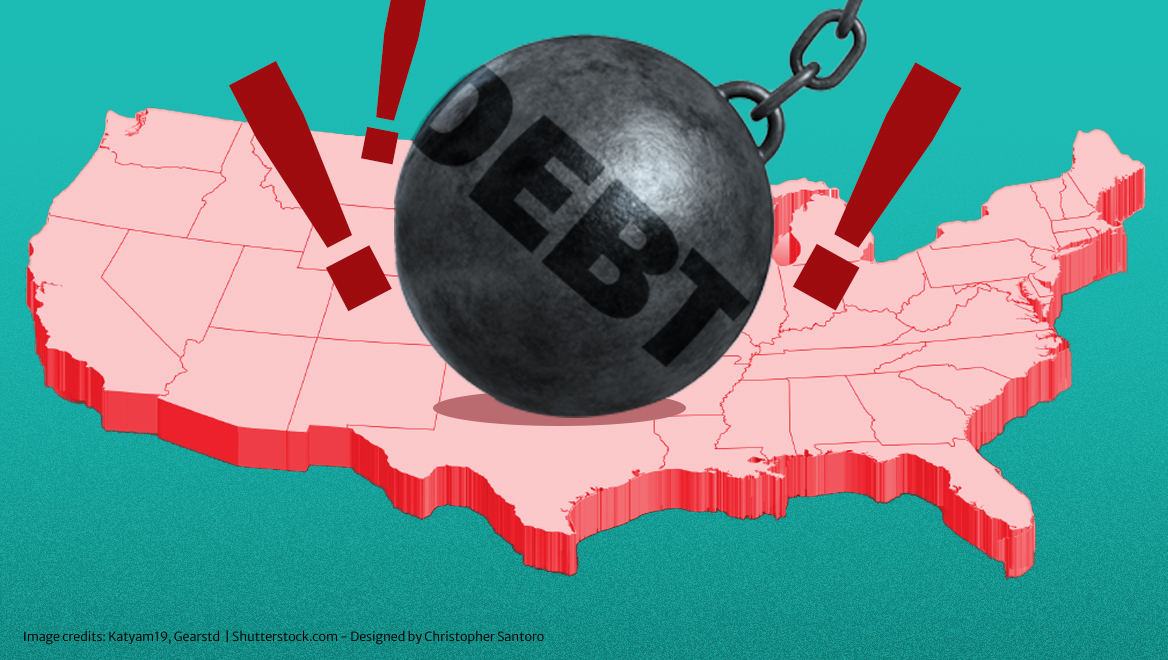Why Moody’s Downgraded U.S. Debt —and Why Banks Should Care
5/22/2025

Moody’s recent downgrade of the U.S. credit rating to Aa1 was no surprise—but the reasons behind it warrant banks’ close attention. As the last major agency to strip the U.S. of its Triple-A rating, Moody’s cited the federal government’s weakened ability to respond to future shocks and projected deficits nearing 9% of GDP by 2035.
The downgrade is about structural issues, not short-term volatility. Moody’s flagged a persistent mismatch between spending and revenue. A $2 trillion annual budget gap and rising interest costs are driving debt toward post–World War II records. New, unfunded tax cuts could make matters worse, according to Jill Cetina, executive professor at Texas A&M’s Mays Business School and former senior Fed and Treasury official. Cetina offered ideas for banks to consider in RMA’s May 15 Risk Readiness webcast—which aired the same day she testified before the House Financial Services Committee on fiscal policy, Treasury market resilience, and economic risks.
“Our government is overleveraged,” Cetina said during the webcast. “We are at 100% government debt to GDP. We are running a 7% budget deficit to GDP in peacetime, which would [only] have been normal ... during a recession.”
Confidence in Treasurys as a safe haven continues to slip. Bloomberg strategist Simon Flint said “the risk of a sharp, nonlinear repricing of U.S. Treasurys has rarely been greater” and that the Moody’s downgrade highlights “pressure building from ongoing fiscal slippage and the erosion of institutional norms.” Others have noted that the synchronized selloff in Treasurys, the dollar, and equities suggests investors are growing uneasy with U.S. fiscal management.
Market volatility is testing Treasury market resilience. Following the downgrade, yields on 30-year Treasurys have been hitting 5%, adding to pressure already seen in recent auctions—but analysts at JPMorgan and Mizuho said it was unlikely to trigger another round of bond market chaos or pose immediate liquidity risk. In her testimony Cetina warned that a continued rise in Treasury rates “is a plausible risk scenario and one that would already negatively impact many U.S. banks in light of their current securities and fixed-rate loan exposures.” She noted that rising yields could coincide with future weakening in the economy, posing challenges for funding and asset valuation for banks. Cetina also emphasized structural vulnerabilities in the Treasury market, including large funding needs, increased reliance on mark-to-market-sensitive investors, and declining foreign demand.
What Banks Can Do Now
Cetina and fellow webcast panelist John Silvia outlined several key actions banks could consider in this uncertain environment:
- Plan for tighter margins and funding stress. With increased volatility and uncertainty ahead, Cetina advised banks to secure stable funding now rather than later. “It is a great time as a bank to think about doing perhaps some term Home Loan Bank advanced funding ... before we get to year end,” she said in the RMA webcast.
- Reassess fixed-income portfolios. With volatility in long-dated Treasurys and potential policy shifts on municipal tax exemptions, Cetina urged banks to be “very cautious about what they’re investing in within U.S. dollar fixed income.” She cautioned that not all asset classes may perform as expected in the current environment.
- Monitor credit quality—especially for consumers and small businesses. With inflation and tariffs cutting into household budgets, “credit card and auto delinquencies have already moved up,” Silvia noted. He warned of “a real consumer credit problem” as the resumption of federal student loan payments adds pressure to already stretched household budgets.
- Track global perceptions of the dollar. While the downgrade won’t cause an immediate exodus from Treasurys, it adds weight to concerns over dollar dominance. Cetina encouraged banks to evaluate fee-based services like correspondent banking and foreign currency deposits to meet potential shifts in demand.

